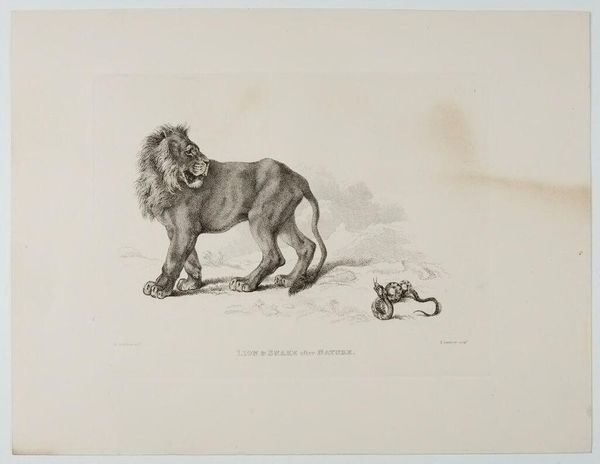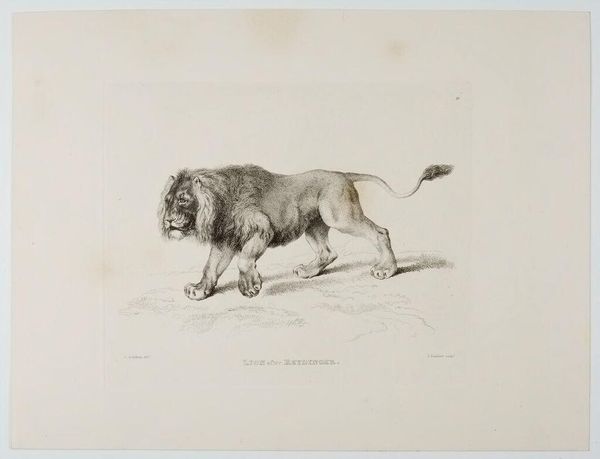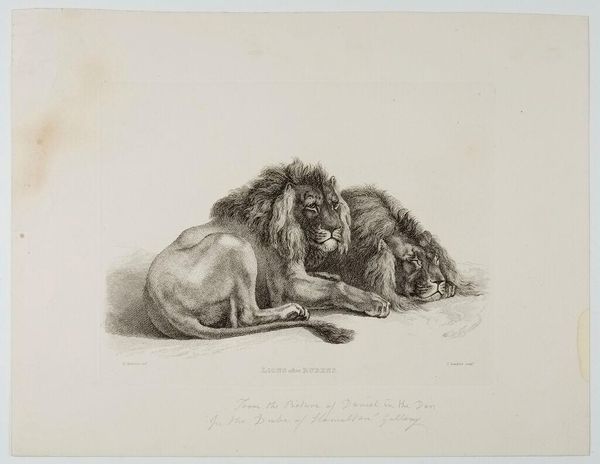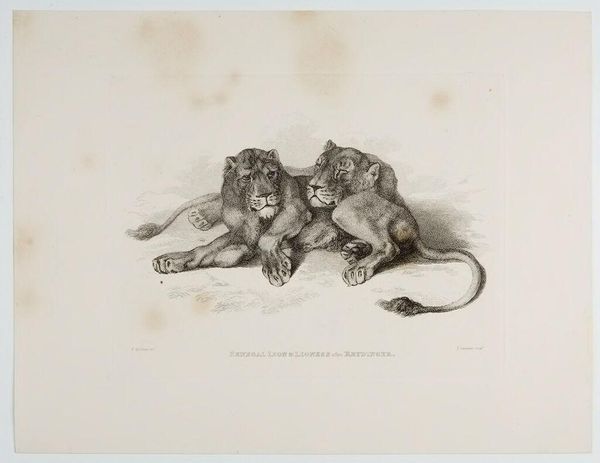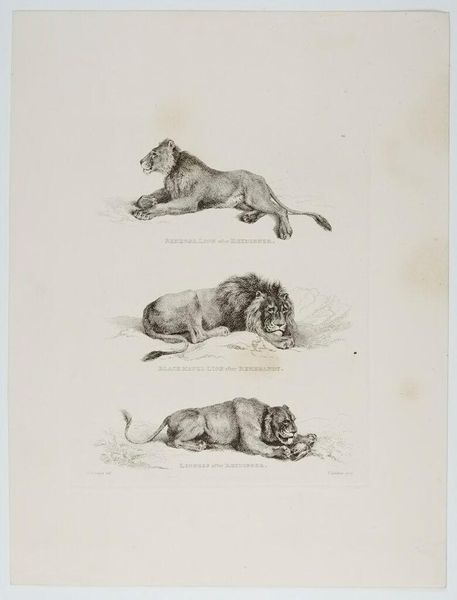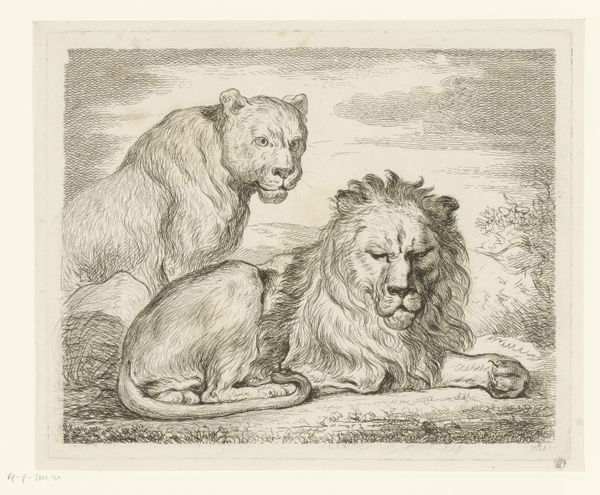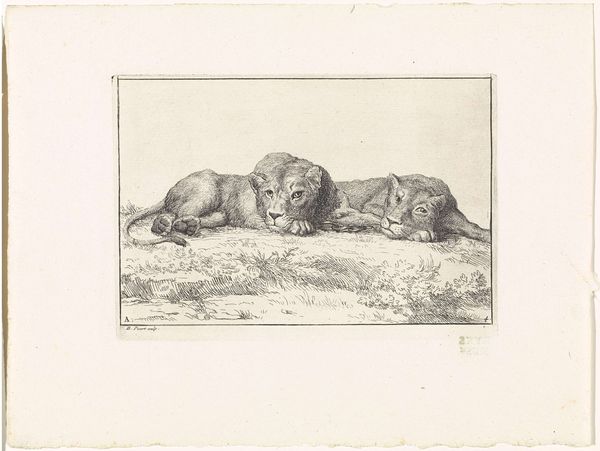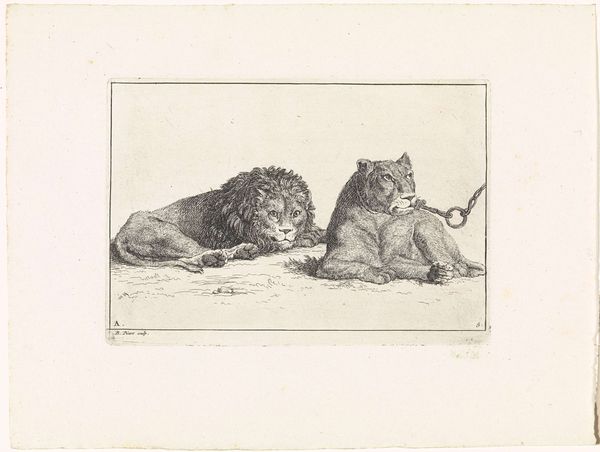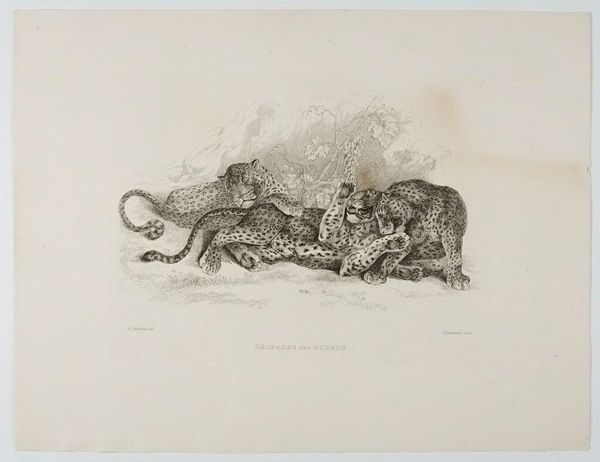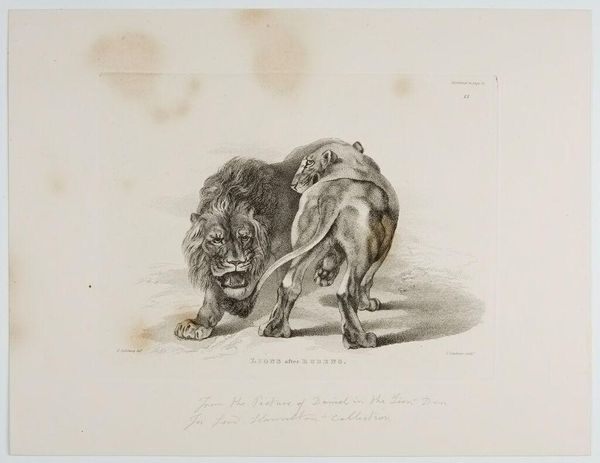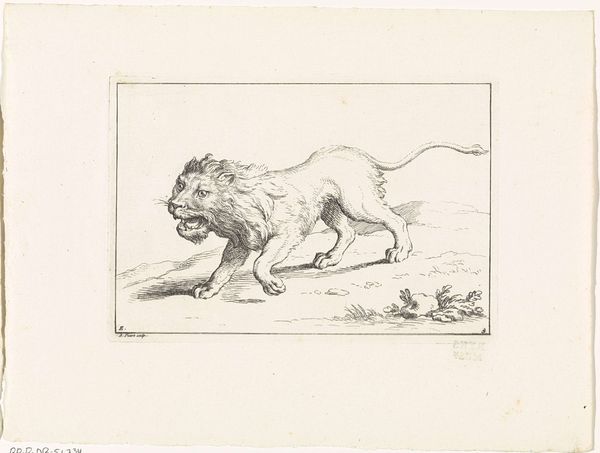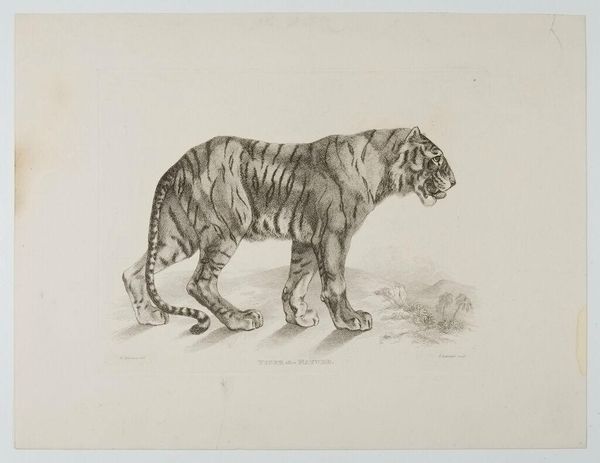
Dimensions: plate: 16.4 x 21.3 cm (6 7/16 x 8 3/8 in.)
Copyright: CC0 1.0
Curator: This is "Lions after Rubens," an engraving by Thomas Landseer, dating back to the 19th century. Editor: Right away, I get a sense of simmering tension. The lion in the front stares right at you, while behind him, another is snarling. It's like a powder keg about to blow. Curator: Landseer was known for his animal engravings, often drawing upon the works of famous painters like Rubens, here engaging with ideas of the sublime and the power of nature. Editor: It's interesting how he captures the texture of their fur with such fine lines. I can almost feel the roughness of their manes. Did prints like this make art more accessible to the public? Curator: Absolutely. Engravings played a vital role in disseminating images and ideas to a broader audience. This print would allow those who couldn't see a Rubens in person to still experience it. Editor: It makes you think about who got to see art back then, and how prints democratized that experience, even if it was just a glimpse of lions through someone else’s eyes. Curator: Precisely, and it showcases the importance of reproductive prints in shaping art history and public perception. Editor: Well, it’s certainly given me a new perspective on both Landseer and the role of art in society.
Comments
No comments
Be the first to comment and join the conversation on the ultimate creative platform.
